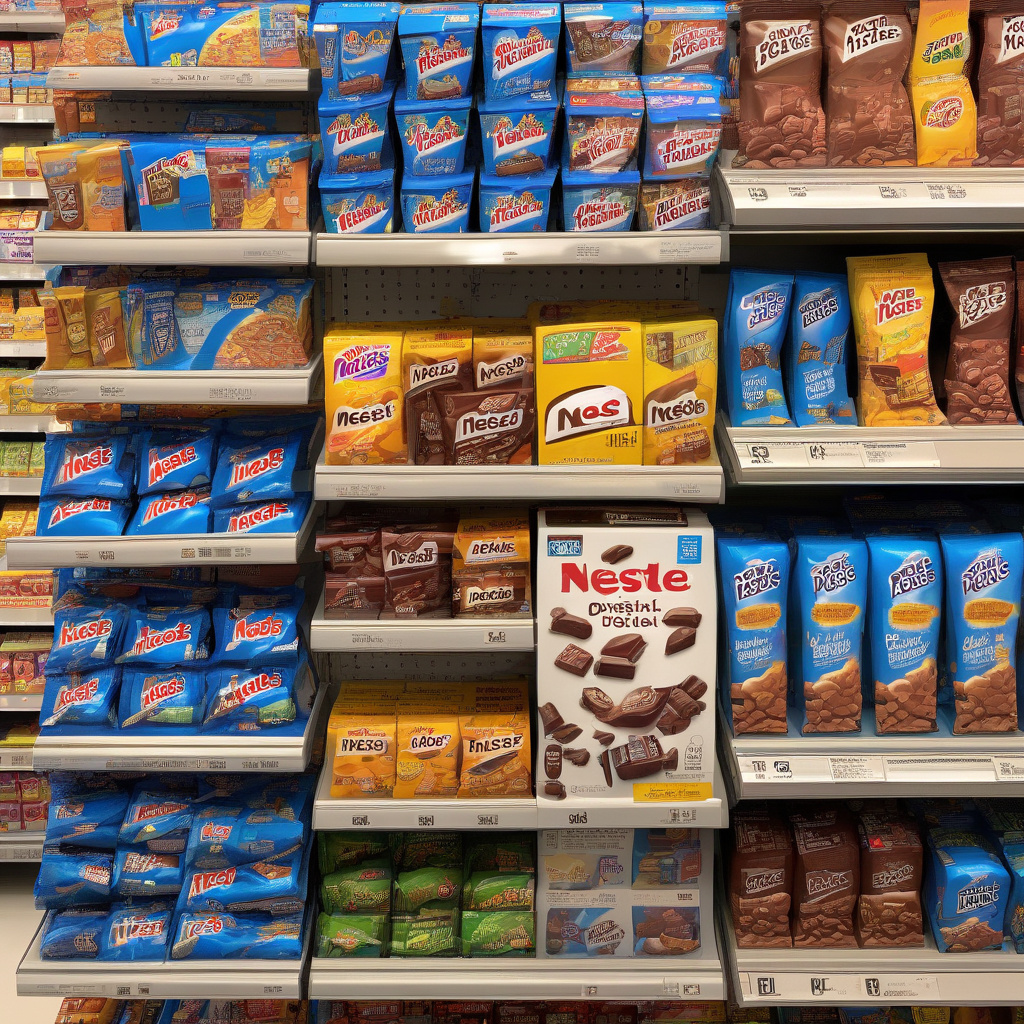Nestle Flags Further Potential Price Hikes as Tariffs and Commodities Weigh on Margins
In a landscape marked by rising costs and shifting consumer habits, Swiss food giant Nestle has indicated that consumers may face further price increases for popular products like KitKat bars and Nespresso coffee pods in the latter half of this year. This announcement underscores the growing pressures on margins that major food manufacturers are experiencing due to tariffs and commodity price fluctuations.
Nestle’s Chief Financial Officer, François-Xavier Roger, recently addressed these challenges during an earnings call, emphasizing the company’s response to external economic pressures. He noted that while Nestle has been able to pass on some of the increased costs to consumers, the reality remains that further price adjustments may be necessary. For iconic products like KitKat and Nespresso, which enjoy robust brand loyalty, these moves could provoke varied reactions from consumers.
The backdrop of this situation is a complex web of global economic factors. Tariffs imposed on imported goods and raw materials have surged in the wake of geopolitical tensions and trade disputes. For Nestle, this means that the costs associated with sourcing key ingredients and packaging materials are on the rise. The company has been vocal about the inflationary pressures impacting its operations and has been actively working to mitigate these challenges.
Commodity prices have also contributed to the strain on Nestle’s margins. For instance, cocoa and coffee prices have seen significant fluctuations, driven by supply chain disruptions and climate-related challenges affecting agricultural production. As one of the largest chocolate manufacturers globally, the price of cocoa directly impacts Nestle’s iconic KitKat bars. Similarly, the company relies heavily on premium coffee beans for its Nespresso brand, making it vulnerable to any market volatility in this sector.
Nestle’s strategy of adjusting prices in response to these pressures is not unique. Many food and beverage companies are navigating similar waters, with some even opting for cost-cutting measures to maintain profitability. However, consumer sentiment plays a critical role in this equation. While brand loyalty can cushion the blow of price increases, there is a limit to how much consumers are willing to pay before they seek alternatives.
Nestle’s historical performance provides insight into how it might approach this challenge. The company has a long-standing reputation for innovation and adaptability, often introducing new products or reformulating existing ones to meet consumer preferences. For example, in response to shifting consumer trends towards healthier options, Nestle has expanded its portfolio to include a variety of plant-based offerings. This adaptability may play a significant role in how the company navigates potential price hikes.
Moreover, Nestle’s extensive global presence allows it to leverage its scale in negotiations with suppliers, potentially mitigating some of the cost pressures. However, the effectiveness of this strategy will depend on the stability of commodity prices and the company’s ability to maintain its supply chain integrity. As such, Nestle’s management is likely to remain vigilant, constantly assessing market conditions while balancing price adjustments with consumer expectations.
While price hikes may be necessary, they could also serve as a tipping point for some consumers. A recent survey revealed that many shoppers are becoming increasingly price-sensitive, especially in the wake of global economic uncertainties. Nestle must tread carefully here; while it wishes to protect its margins, it also has to consider the long-term implications of alienating a portion of its customer base due to higher prices.
Looking ahead, Nestle’s communication strategy will be crucial. Transparency about the reasons behind price increases and a continued commitment to quality will be essential in maintaining consumer trust. The company is known for its sustainability initiatives, and amplifying these efforts while addressing price hikes could help soften the backlash.
In conclusion, Nestle’s potential price increases for KitKat bars and Nespresso coffee pods are indicative of broader trends affecting the food and beverage industry. As tariffs and commodity prices continue to exert pressure on margins, companies like Nestle must navigate these challenges with a strategic approach. The ability to adapt, innovate, and communicate effectively will determine how well they can maintain consumer loyalty in such a turbulent market.
Nestle’s journey forward will undoubtedly be closely watched by stakeholders, from consumers to investors, as the implications of these price adjustments unfold.
retail, finance, business, Nestle, commodities
